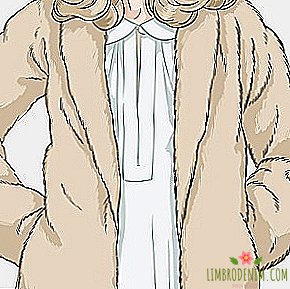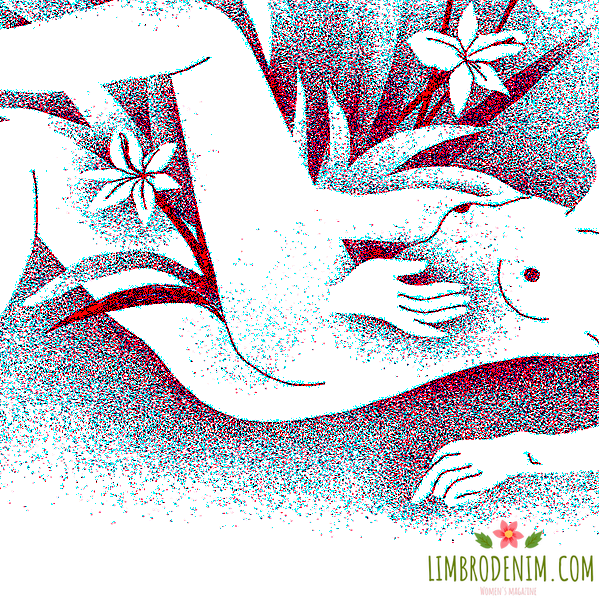Gosha Rubchinskiy and Burberry: Who still needs collaborations
2017 year. Byredo, a popular and fashionable perfume brand price category above average, announces the collaboration with IKEA. The goal of the collaboration is to create "a fragrance for an IKEA-style home, if it exists at all." Shortly before, the authors of Ektorp sofas and Docksta tables decided to turn into one of the most high-end contemporary designers, Virgil Ablo, founder of the Off-White brand and stylist Kanye West, and offered him to upgrade the famous Ikai Frakta bag - the one that is slightly modified. it appeared in the 2017 spring-summer men's collection Balenciaga and caused a contradictory reaction: its price was $ 4,000, although the shopper IKEA x Off-White, as promised, will be several times cheaper.
These are just two examples from the many collaborations that have seen the light over the past year. Fashion houses "collaborate" with long-standing painters and skate brands, British brands with more than a century and a half history with designers from the post-Soviet space, sports companies with a variety of celebrities. We understand which brands need collaborations today, who benefits from them and why haute couture decided to borrow popularity from the street.

Can you imagine that Rihanna spends her days working on the sketches of her Fenty Puma line? It is unlikely, especially given the fact that its status as a modern style icon is the merit of stylist Mel Ottenberg
The concept of fashionable collaborations was not born yesterday. Their prototype can be considered, for example, the collaboration of Elsa Schiaparelli and Salvador Dali in the 1930s - the result was a legendary dress with a lobster pattern based on the artist’s surrealistic sculpture, a dress whose print created the illusion of a torn fabric, and a hat in the form of a shoe. Dali, by the way, was not the only one who left his mark in the Sciaparelli collections: Jean Cocteau co-authored two models at once produced under the name of the Italian designer - an evening coat with the image of two kissing people and a volume floral appliqué and a set of a jacket and a skirt.
Such collaborative projects, as we would call them today, looked quite organic: Schiaparelli rotated in Parisian art circles, was friendly with Dali and Cocteau (and also with Francis Picabia, his wife and other artists), so both cases it was all for love. It is impossible not to see the benefits for both sides: Schiaparelli, not the most ingenious designer in terms of cut and shape, got the opportunity to make her models more interesting and eye-catching, and the artists to realize themselves in the new sphere (for example, Dali, by creating print for The Tear Dress illusion of torn flesh, gave a continuation of his painting "Necrophilia spring") and make yourself a kind of promo. Nothing like?
In 1983, one of the headliners for American fashion, Roy Halston, created a collection specifically for JCPenney department store: shirts with bows, jumpers and dresses at a digestible price of $ 40 or less. This format was a logical continuation of the democratization of fashion, which began a decade earlier, but was ahead of its time: the public accepted the collection without enthusiasm, and one of the largest department stores in the US, Bergdorf Goodman, completely removed the Halston first-line models from the sale, as he believed that such things were side level luxury status designer. It will take less than twenty years before collaborations with the mass market brands will become a familiar practice for all industry players - from H & M and Topshop to Karl Lagerfeld and Maison Margiela. Again, it makes no sense to talk about the causes and consequences of such "unequal marriages" - just look at how the sales start-up, say, of the Balmain x H & M collection, passed around the world.


Finally, the third example of fashion-driven collaborations is brand collaboration with stars. The trend began to gain momentum even at the dawn of zero, when the celebrity industry turned into a mass-scale phenomenon, and the popularity of all sorts of reality shows proved that it is not at all necessary to have outstanding talent in order to get an army of fans. Glory itself has become a convertible currency, and joint projects of brands with celebrity - an excellent advertising tool that increases sales at times. Over the next fifteen years, collections “created” by actresses, singers and singers or models together with brands of the very different caliber, have become commonplace for the fashion industry: Kanye West for A.P.C. and Louis Vuitton, Farrell Williams and adidas, Rihanna for River Island and now Puma, Chloe Sevigny for Opening Ceremony, Kate Moss and Beyoncé for Topshop, Jennifer Lopez and Zayn Malik for Giuseppe Zanotti - if successful, such projects turn into several years of solid mutually beneficial cooperation, the rest remain one-time actions.
Today, not only large companies that have millions of budgets for guest star fees are decided on celebrity collaborations - for example, Pamela Anderson and the relatively young French brand Amélie Pichard agreed on the basis of their love for eco-mode. It does not matter at all whether celebrities have a personal style that they can broadcast through the collection: often their function is solely to put their name on the label and promote the project through social networks.
Does the assortment of the Gigi Hadid collection for Tommy Hilfiger differ from what this brand usually offers? Not particularly. But for Tommy Hilfiger this is a chance to make an additional drop and make impressive profits - for example, most of the things from the collaboration shown during the spring-summer 2017 season in Los Angeles were sold out almost before the start of the show.
And can you imagine that Rihanna spends her days working on the sketches of her Fenty Puma line? It is unlikely, especially given the fact that its status as a modern style icon is the merit of stylist Mel Ottenberg. However, who cares about the actual involvement of the star in the collection released under her name?
These three key business models are vectors in which the subindustry of fashionable collaborations has been moving for the past 15–20 years, and each of them uses its own marketing strategy. In the case of “fashion plus art”, this is an attempt to communicate the first more significant status, formally equating it to the category of high culture. Attempts to ideologically connect the two poles, which were considered opposite to a certain point, were made as early as the 20th century (it is enough to recall the famous Monderian dress by Yves Saint Laurent or the unprecedented case of the time when Art magazine in 1982 placed a model in a dress on the cover Issey Miyake), but received a commercial direction at the beginning of the XXI century. In 2001, Marc Jacobs, who by that time had been in the status of creative director of Louis Vuitton for four years now, announced a collaboration with artist Stephen Sprouse.


Jacobs was faced with the task of reviving the legacy of an old fashion house - bags and other leather goods - and a brilliant solution was found by itself: to offer Sprouse to decorate the famous Speedy and Neverfull with his signature graffiti. The collection, of course, scattered like hot cakes. Since then, collaborations with artists have become a regular practice for Louis Vuitton (Takashi Murakami, Yayoi Kusama, Richard Prince, the Chapman brothers are just some of the figures involved), and other luxury houses follow him: Alexander McQueen and Damien Hirst, Prada and James Jean (and then - Latin American artists-muralists and Christoph Shemen), Gucci and Trevor Andrew, Dior and Anselm Reyle, Coach and Gary Beisman and others.
The apogee can be called the recent limited edition collection of Louis Vuitton and Jeff Koons, which included Leonardo da Vinci’s Mona Lisa handbags, Van Gogh’s Wheat Field with Cypress trees and other replicas of great masters’s works - Gazing Ball ". Complemented with metal fittings in the form of the LV logo and the names of the mentioned artists Speedy became a reason for jokes, the most successful of which: "Now millennials will think that Rubens is a designer of handbags."
The phenomenon of mass-market collaborations with luxury brands is extremely understandable: since fashion began to move towards total democratization in order to maximize profits, the designer lines available to the general public have become a gold mine for both parties. Buyers get the opportunity to buy things similar in design to those they dreamed about, but could not afford, and the direct participants of the duet - the opportunity to sell the fruits of their work in huge batches, and at the same time get a ton of publications in the media and social networks.
In addition, this kind of collaboration today is an analogue of the marketing strategy that gained popularity in the 1990s, when fashion houses began to produce perfumes and cosmetic lines to give mass audiences the opportunity to get acquainted with the brand (they were motivated "today they will buy our lipstick and tomorrow - bag "). The fact that the democratic Maison Margiela collection for H & M contradicts the very essence of the Belgian brand, and the “wild” prints of Versace look unpresentable when printed on viscose, few people care - the main thing is that you can boast of a trophy in the instagram and at least touch the beggars of the fashionable Olympus. The brand cooperation policy with celebrities is even more transparent: to get the notorious HYIP and sell the collection in less than 15 minutes, you just need to choose the right ambassador - a star with a big and dedicated fan base who will be ready to buy at least gold toilet paper, if It means a well-known name.

The fact that the democratic Maison Margiela collection for H & M contradicts the very essence of the Belgian brand, and the “wild” Versace prints look unpresentable when printed on viscose, few people care - the main thing is that you can boast of an inscribed trophy on Instagram
And yet the buyer is not as illegible as it seems. For the modern consumer, it’s not so much the design itself that matters, but the story that is built around a brand or collection, and the person behind it all.
Let's say you come to the Uniqlo store for the U line, not just to buy a basic jumper or jeans, but because you like Christoph Lemar and his aesthetics. Or the cap from the Gigi Hadid x Tommy Hilfiger collection is sold out in a matter of minutes not because thousands of boys and girls have always dreamed of such, but could not be found anywhere, but because Hadid herself wears the same cap. The essence of the phenomenon was well formulated by one of the speakers in The Observer’s article on fashionable collaborations: “I love Gigi Hadid, but Tommy Hilfiger is not particularly attracted to me as such. But I see that it cooperates with the brand, and this motivates me to buy, because Gigi is an example to follow. Such projects encourage people to buy things that they wouldn’t even look at in a different situation, simply because of the name on the label. "
The collaboration boom in the last year and a half has only increased: we are seeing the cooperation of brands belonging to both the same price category and those at opposite ends of the spectrum. There are many similar examples from the past: in 2012, the British skate brand Palace made a collaboration with the sports brand Umbro, in 2008 Acne Studios released a joint collection with Lanvin (the union lasted three years), Carhartt and A.P.C. worked together in 2010 But we have never seen such a massive influx of “brand-brand” format “brand-brand”: Missoni and Converse, J.W.Anderson and Convers, Louis Vuitton and Supreme, Gosha Rubchinsky and adidas, Burberry and Fila.


One of the first impulses to this trend was Demna Gvasalia: the 2017 Spring-Summer Vetements collection consisted entirely of mini-collaborations with eighteen brands, including Juicy Couture, Brioni, Malono Blahnik and Canada Goose. In fact, Gvasalia did not even have to invent anything fundamentally new - he simply took as a basis the iconic models of certain brands and modified them a bit. From a formal point of view, this is not plagiarism: the collection was initially officially declared as a collaboration. This case is a metaphor of everything that happens in modern fashion and the area of fashion design: the principle of endless repetition of existing models and styles that does not make sense to veil. Why come up with a new model of the bag, if you can just repaint it in a bright color, sticking a screaming logo?
There is another reason for this kind of cooperation. Brands for a long time do not appeal to a specific audience, and fashion has ceased to be exclusive in its essence. Today, the guy who can afford Louis Vuitton, would not mind buying a bomber jacket from the collaboration of a fashion house with a skate brand, and the guys dressing in Supreme from head to toe, thanks to the joint collection, in turn, can be interested in Louis Vuitton.
Girls whose mothers wear Missoni will prefer sneakers decorated with a branded zigzag print, because this brand symbol emotionally connects them to something significant, but the Missoni scarf doesn’t look modern enough for them. For Italian streetwear brands Fila and Kappa, cooperation with super popular Gosha Rubchinsky is a chance for a second wind: if for Gosha fans to buy a T-shirt with a logo popular in the 1990s, this is a matter of honor, then less whimsical (or wealthy) seekers of HYIP can with the same success Buy an original Fila T-shirt.


Over the past year, adidas has collaborated twice with the same Gosha - the official partner of the World Cup, the finals of which, as we know, will be held in Russia next year. Is it worth explaining that for a German sports brand, the interaction with one of the most discussed and popular designers among young people is an extremely successful promotion? And although the designer’s collaboration with Burberry, shown in St. Petersburg as part of the latest collection, seemed to the philistines far less obvious (say, what’s the reason for the British fashion house to take part in such initiatives), the answer also lies on the surface.
The company's profit continues to fall, including in Russia, and the strategy chosen by Christopher Bailey for the post of creative director Christopher Bailey, when it comes to the post, to attract millennials through social media communication, no longer works as effectively as before. The way out of the crisis, obviously, seems to the leadership to be a collaboration with a fashionable youth designer whose name sounds from every online publication. At the same time, the collection is made as clear as possible for a wide audience, and the main reference is a branded beige-black cell - a visual code that Burberry reads instantly in Russia (funny that in the early 2000s, when the brand set itself the task of correcting its shaken - due to excessive popularity among football fans and chavs image, it was the cell that became a stumbling block for the design team). As a result, all participants receive a profit.
It is hardly to be expected that the popularity of the collaborations will decline in the near future - if the Swedish furniture manufacturing company decides to enter the fashion arena by working with a popular designer who has become a special guest at the Pitti Uomo exhibition, what about more traditional fashion unions? Collaboration brands are an easy way to make money, for consumers it is an opportunity to get closer to your favorite star or get Alessandro Michele's handbag for $ 150 instead of $ 1500, or just jump into the train by buying a thing from the acclaimed collaboration. So, everyone is happy - is it worth complaining?
Photo: Met, Kanye West x Adidas Originals, Chlo Sevigny x O.C., Louis Vuitton, Gigi Hadid x Tommy Hilfiger, Vetements, Adidas Football x Gosha Rubchinskiy, Burberry x Gosha Rubchinskiy





